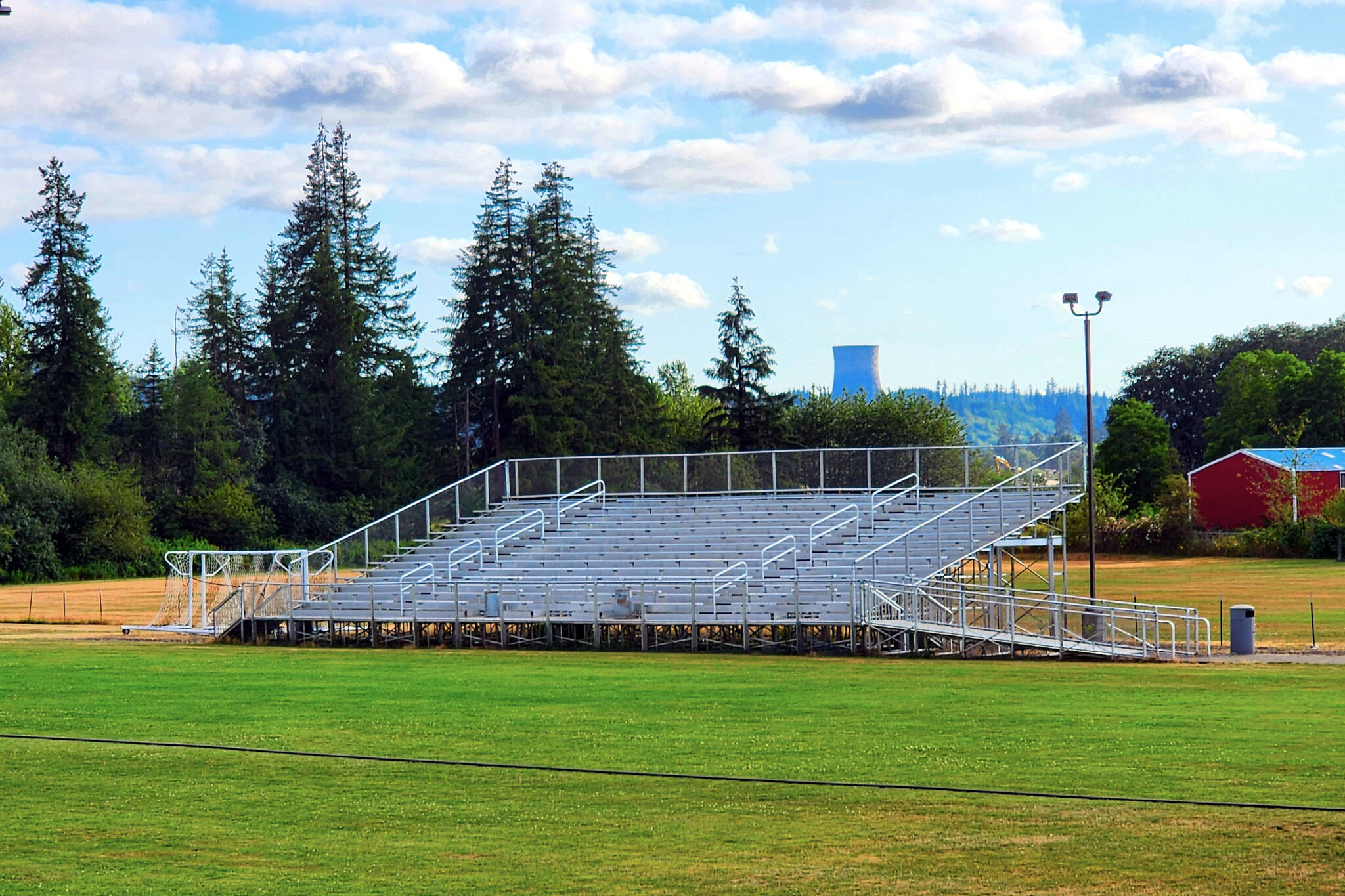Editor’s note: Former Daily World sports editor Rick Anderson gives his thoughts on Davis Field improvements.
The first high school football game I covered during a long career as a Daily World sports writer and editor took place in September of 1972 at Elma’s Davis Field.
Elma defeated Montesano that night in the first of two meetings that season between the East County rivals (for the record, Monte won the rematch).
I’ve thus viewed the long-running stalemate over the construction of a new Elma stadium with a mixture of nostalgia and frustration.
Located on the Elma High School campus, Davis Field has been without a covered seating area since 2014, when the old wooden grandstand was condemned. Several bond issues to build a new stadium have been rejected by voters — most by significant margins.
While Davis Field has continued to host Eagle football and soccer games during the past decade, spectator accommodations have been restricted to one set of relatively small, uncovered metal bleachers located on one side of the field.
This less-than-ideal situation may soon be resolved by a proposal organized by Elma’s Brogan family and their non-profit entity— A Chance to Play Foundation — to build a 1,300-seat covered grandstand on the Davis Field footprint. If it materializes, Davis Field would retain its name but the seating area will be renamed Chance Brogan Memorial Grandstand in honor of a former Eagle athlete who died in 2022.
The proposed $4.5 million project will be financed through a combination of family funds, donated labor and community donations. Delaney Holcomb (Chance’s sister), who established the foundation, said recently that donations currently exceed $400,000.
While the project is currently on hold while foundation and school district attorneys hammer out appropriate legal language, all parties appear optimistic that a deal eventually will be done.
The failure of past stadium bond issues has resulted in considerable finger-pointing on both sides of the issue.
But I’ve always considered the impasse to have stemmed from a disconnect between opposing factions that were taking understandable positions.
Davis Field is located to what is generally acknowledged to be a flood plain. Although field maintenance has improved greatly in recent years, late-season Elma football games over the years have too often degenerated into mud baths.
The original plan, to construct football, soccer, baseball and softball fields on property adjacent to Elma Elementary School on the west outskirts of the city, was admittedly ambitious but nonetheless appealing to district officials. The new location could offer better drainage and increased parking (although Davis Field’s parking lot is relatively large by Grays Harbor standards) and adding artificial turf to the football and soccer fields would presumably improve playing conditions.
But the price tag was too steep for district taxpayers, particularly when the cost of artificial turf was factored into the equation.
Having received a message that voters didn’t want an off-campus stadium or artificial turf packaged into the stadium cost (leaving open the possibility that turf could have been added at a later date), stadium proponents undoubtedly erred by continuing to submit proposals that included one facet or the other.
Former Elma athletic director Steve Bridge, an unhappy observer to the bond failures, attributed the rejections to “a mistaken perception (by administrators) of what the community wanted. The silent majority said, ‘we can’t afford it.’”
But stadium opponents may have also been culpable in failing to provide constructive input.
“From my standpoint, it was next to impossible to get these people to come to (community) meetings,” Bridge related. “They voiced their displeasure at the ballot box.”
A series of community forums over the past three years reportedly have been more productive and greased the skids for the current proposal.
There are some observers who believe that a bond issue funding a bare-bones, natural-grass stadium located on the high school campus would have eventually passed muster with Elma voters. I’m not so sure.
New athletic facilities don’t come cheap and are often viewed by taxpayers as luxury items as opposed to a necessity. Bond issues that require a 60% super-majority approval rate always face tough sledding. Even Grays Harbor maintenance-and-operation school levies, which once routinely cleared the super-majority requirement with votes to spare before the law was changed to allow for simple majority approval, now usually pass with less than 60% approval.
The majority of athletic facility improvements these days are financed by other methods. When its grandstand was destroyed by fire during Montesano’s 2012 state championship football season, Monte’s Rottle Field was rebuilt through insurance money and donations. Grants have figured into the upgrades of other area fields.
That’s why the Brogan family’s proposal came as such a welcome and timely surprise.
There remains a faction within the Elma district community that believes that the current Davis Field status quo is adequate.
To put it bluntly, it’s not.
It’s one thing for spectators to lounge along the sidelines in lawn chairs during football and soccer games played on balmy September nights (I was mildly surprised, incidentally, that more Eagle home games weren’t scheduled for Saturday afternoons). But it’s an entirely different proposition to expect unprepared visiting fans, in particular, to endure stormy weather later in the fall. The absence of covered grandstands also all but eliminated the possibility of Elma hosting football playoff games.
Even Lake Quinault’s Fred Soth Field, located in a much smaller and more economically challenged community than Elma, has a more spectator-friendly football environment than Elma.
To be certain, the Brogans’ proposal doesn’t address the field’s drainage issues. Although artificial turf could be added sometime down the road, Delaney Holcomb said that aspect of the project is “the school district’s call.”
Despite the delay in the beginning of construction, Holcomb is optimistic that the new grandstand will be in place for the 2025 season.
Regardless of the outcome of the game in question, opening night with the new grandstand figures to be a winner. Future generations of Elma players and fans deserve nothing less.



